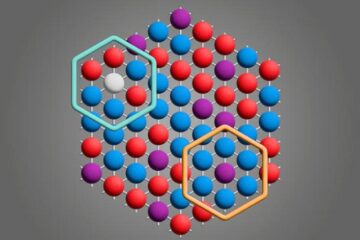Coral Population Stable and Sea Urchins Are on the Rise in Florida Keys

Long-term monitoring conducted by researchers from the University of North Carolina Wilmington (UNCW) has revealed that while populations of the iconic branching corals remain far below their historic numbers, the surviving populations of both species have not suffered further declines.
“Our estimates for population sizes for staghorn and elkhorn have remained relatively constant over the last ten years, with millions of staghorn colonies and several hundred thousand elkhorn colonies present throughout the sanctuary,” said UNC Wilmington researcher Steven Miller, principal investigator for the project. “These numbers, however, represent a small fraction of what previously existed throughout the Florida Keys.
Coral disease devastated staghorn and elkhorn corals throughout the Keys and Caribbean starting in the late 1970s. Significant population declines were also caused by severe coral bleaching.Dwindling populations prompted the 2006 listing of staghorn and elkhorn coral as threatened on the Endangered Species List.
Since 1998, UNCW scientists have monitored the coral reef communities in the Florida Keys National Marine Sanctuary (FKNMS). During the summer of 2011, UNCW and national marine sanctuary scientists counted and measured corals, as well as invertebrates such as urchins and anemones, at 280 Florida sites from northern Key Largo to Islamorada.
“Results from this long-term research help sanctuary managers evaluate the condition of our coral reefs,giving us a big picture view of how much coral is out there, where it's located, and its condition,” said FKNMS science coordinator Scott Donahue. “Though significant natural recovery of elkhorn and staghorn has yet to be documented, the good news is that these corals are still here and their numbers are holding steady.”
UNCW research indicates that long-spined sea urchins, important seaweed grazers, also appear to be on the slow road to recovery. Disease ravaged urchins in Florida and the Caribbean in the early1980s, killing massive numbers of the species.
“Although long-spined sea urchin densities are almost 100 times less than their levels in the early 1980s, we have documented a slow, but steady increase in their numbers and sizes,” said UNCW researcher Mark Chiappone.
Results indicate that urchin sizes have noticeably increased in the past 20 years and researchers anticipate that with time, increasing urchin numbers and sizes may help corals to recover on reefs with abundant seaweed cover.
Research support was provided by the National Oceanic and Atmospheric Administration's Coral Reef Conservation Program, National Marine Fisheries, the U.S. Fish and Wildlife Service's Endangered Species Act Section 6 Funding, the Office of National Marine Sanctuaries and UNCW's Aquarius Reef Base.
Media Contact
More Information:
http://www.uncw.eduAll latest news from the category: Ecology, The Environment and Conservation
This complex theme deals primarily with interactions between organisms and the environmental factors that impact them, but to a greater extent between individual inanimate environmental factors.
innovations-report offers informative reports and articles on topics such as climate protection, landscape conservation, ecological systems, wildlife and nature parks and ecosystem efficiency and balance.
Newest articles

Microscopic basis of a new form of quantum magnetism
Not all magnets are the same. When we think of magnetism, we often think of magnets that stick to a refrigerator’s door. For these types of magnets, the electronic interactions…

An epigenome editing toolkit to dissect the mechanisms of gene regulation
A study from the Hackett group at EMBL Rome led to the development of a powerful epigenetic editing technology, which unlocks the ability to precisely program chromatin modifications. Understanding how…

NASA selects UF mission to better track the Earth’s water and ice
NASA has selected a team of University of Florida aerospace engineers to pursue a groundbreaking $12 million mission aimed at improving the way we track changes in Earth’s structures, such…





















